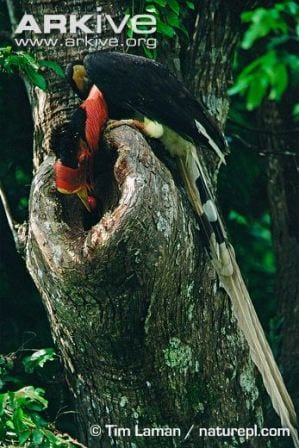Specimen of the Week: Week Ninety-Five
By Emma-Louise Nicholls, on 5 August 2013
 Five blogs away from the big 1-0-0! In the run up to the 100th blog I am going to bring to you the top ten specimens at the Grant Museum, as voted for by…. me. I have employed strict criteria with which to segregate the top ten from the other 67,990 specimens that we have in our care…
Five blogs away from the big 1-0-0! In the run up to the 100th blog I am going to bring to you the top ten specimens at the Grant Museum, as voted for by…. me. I have employed strict criteria with which to segregate the top ten from the other 67,990 specimens that we have in our care…
1) It must not be on permanent display, giving you a little behind-the-scenes magic, if you will, as the specimen will then go on display for the week of which it has been named ‘Specimen’. Oh yes. That’s almost as good as our exhibition It Came From The Stores. Almost.
2) It must have at some point in the past made me say ‘woooo’ out loud (given my childlike disposition for expressing wonderment at the world at large, this is not necessarily a hard qualification for the specimen to achieve)
3) I must know (at least in a vague sort of a way) what species the specimen is, as SotW is researched and written within a strict one hour time frame.
With that in mind, at Number Six, this week’s Specimen of the Week is…
**The helmeted hornbill’s helmet**
1) The name ‘helmeted hornbill’ conjures cartoon an image of a bird with a motorbike helmet that doesn’t quite fit the reality. It is however, one cool cookie of a bird. The helmet part of the name refers to the large protuberance that sits upon its already stupendous bill. Which is in fact, the specimen. The ‘helmet’ is technically known as a casque and, whist other casque-adorned hornbill species opted for lightweight models, the helmeted hornbill’s casque is solid. The other end of the bird is also spectacular, they have extremely long tail feathers which in many individuals are longer than the entire body.
2) A less attractive (depending on what you like) area of the bird is the neck which in both boys and girls is naked, wrinkly looking leathery skin. The skin is red in males and a variation of turquoise to dark red in females, depending on the age of the individual. The helmeted hornbill is the largest species of hornbill within the whole of Asia. Its range spans from Myanmar and Thailand, south through Malaysia to the islands of Sumatra and Borneo. Unfortunately it is thought to have been driven to extinction in Singapore in the 1950s due to habitat loss.

A female helmeted hornbill showing the rather
fetching neck skin. (Image taken by Doug
Janson. Image obtained from www.arkive.org)
3) The helmeted hornbill has a call less bird-of-paradise, and more cranky-out-all-night-drinking-woken-up-early-by-the-kids-got-a-massive-hangover. It can be described as a number of ‘took ’noises followed by… well… maniacal laughter. The call, should you hear it, is unique to this species. Whilst small groups of non-breeding helmeted hornbills may be seen foraging together, breeding pairs are much more territorial.
4) Other than hard fought for figs, the helmeted hornbill will also snack on small mammals, snakes, and even, if they fancy it, smaller hornbills. Adult males have been observed having incredible aerobatic feuds in mid-air in which they will physically slam into each other, their clashing casques producing a loud ‘clack’. One of the two is normally flung backward by the force but manages to right itself in flight. You’d think this fighting would take place over a lady given that ‘boys will be boys’, but scientists believe it is actually over food as they tend to occur near fruiting fig trees. Well they do say the way to a man’s heart is through his stomach. Like a pseudo-bat-bird, the helmeted hornbill is sometimes seen hanging upside-down high in the forest canopy digging beneath the tree bark with its beak, foraging for food.

A male helmeted hornbill passing food to a
female sealed inside the tree. (Image taken
by Tim Laman/nature.pl. Image obtained
from www.arkive.org)
5) As with all other species of hornbill, the helmeted hornbill is noted for its less than normal nesting habits. The courting pair will choose a hollow tree in which they make a nest. Once the female has laid the eggs, the male seals her in with mud. The only contact she has with the outside world is through a small hole left in the mud, through which the male passes her regurgitated food. Once the eggs have hatched, the female escapes from her prison but then reseals it behind her until the baby hornbills have fledged. WEIRD.
Emma-Louise Nicholls is the Museum Assistant at the Grant Museum of Zoology
 Close
Close


